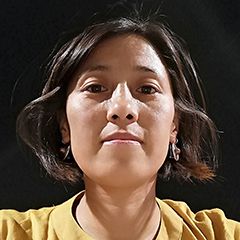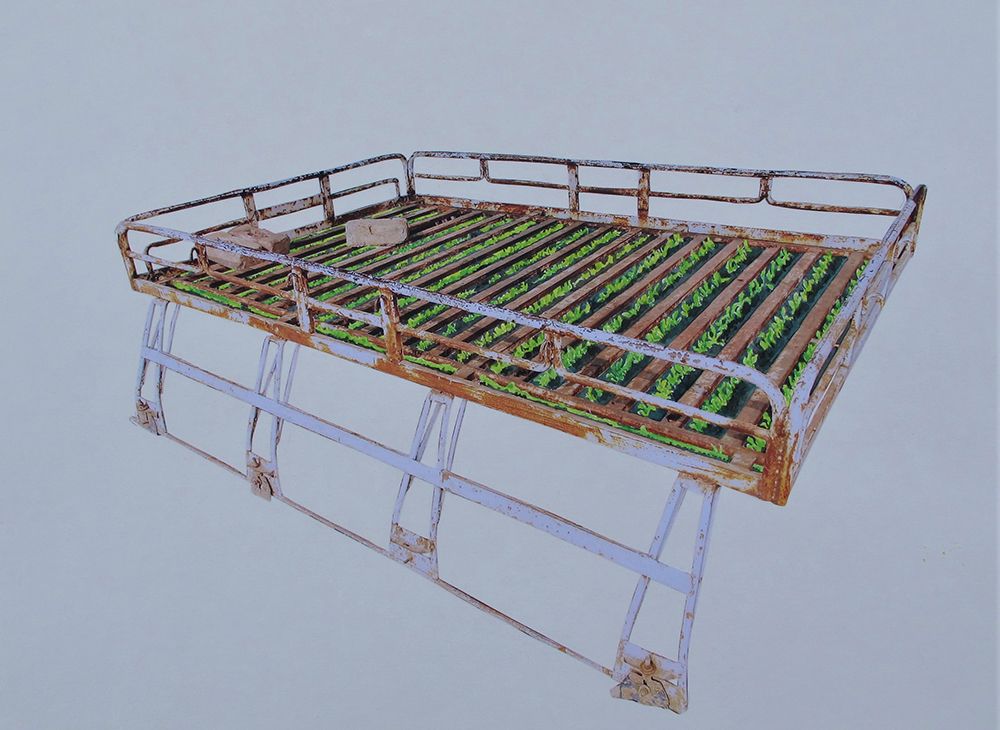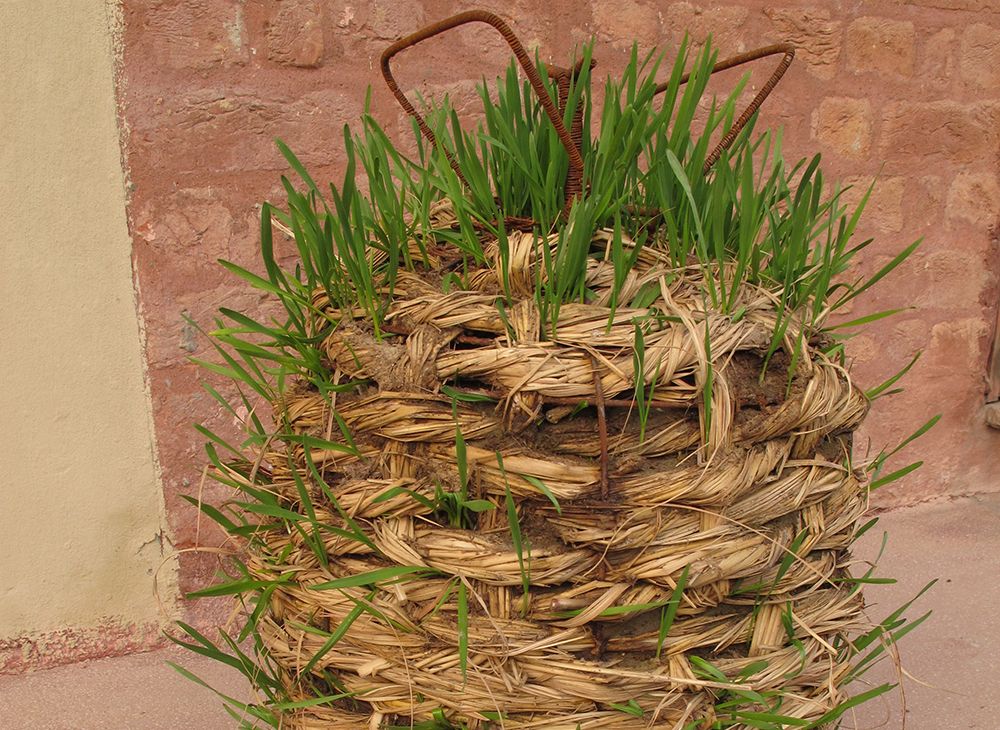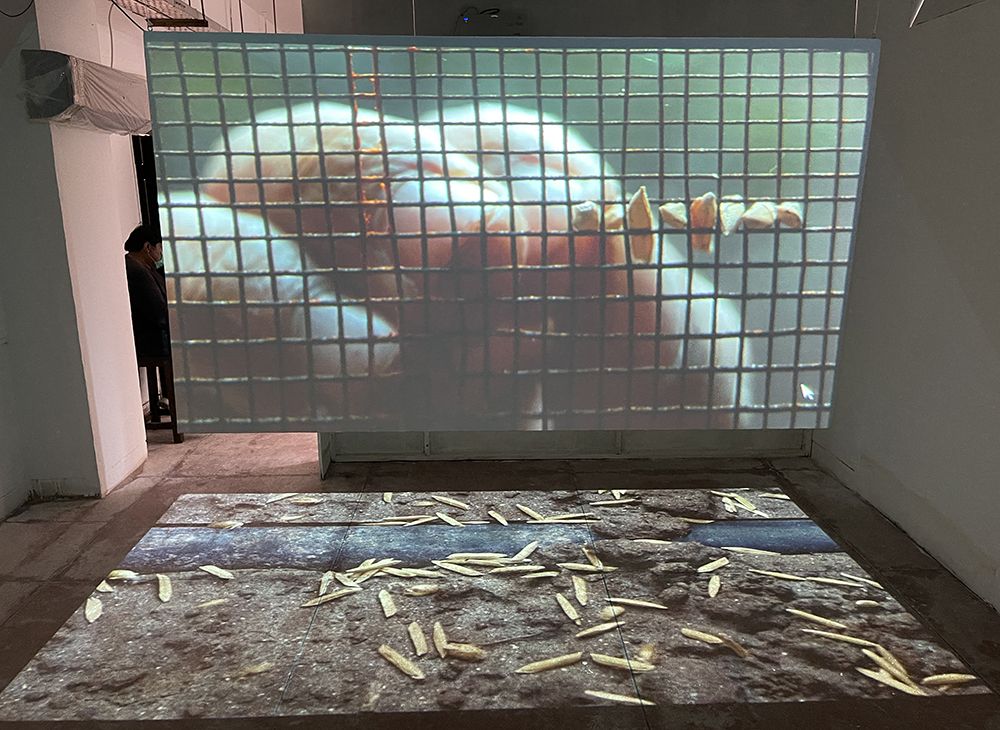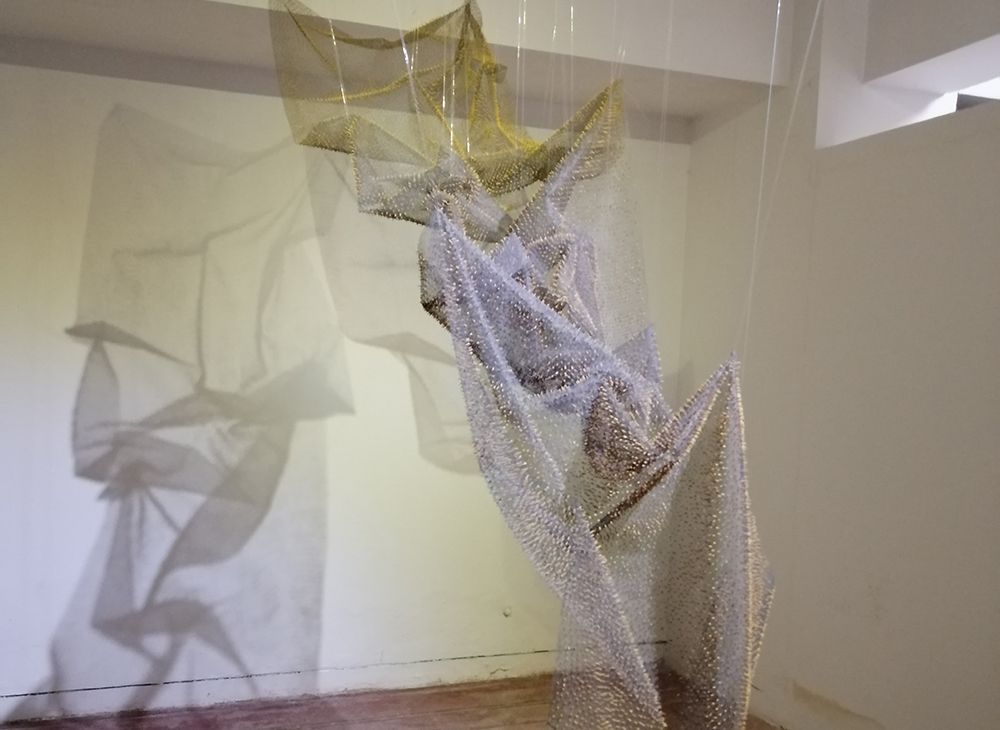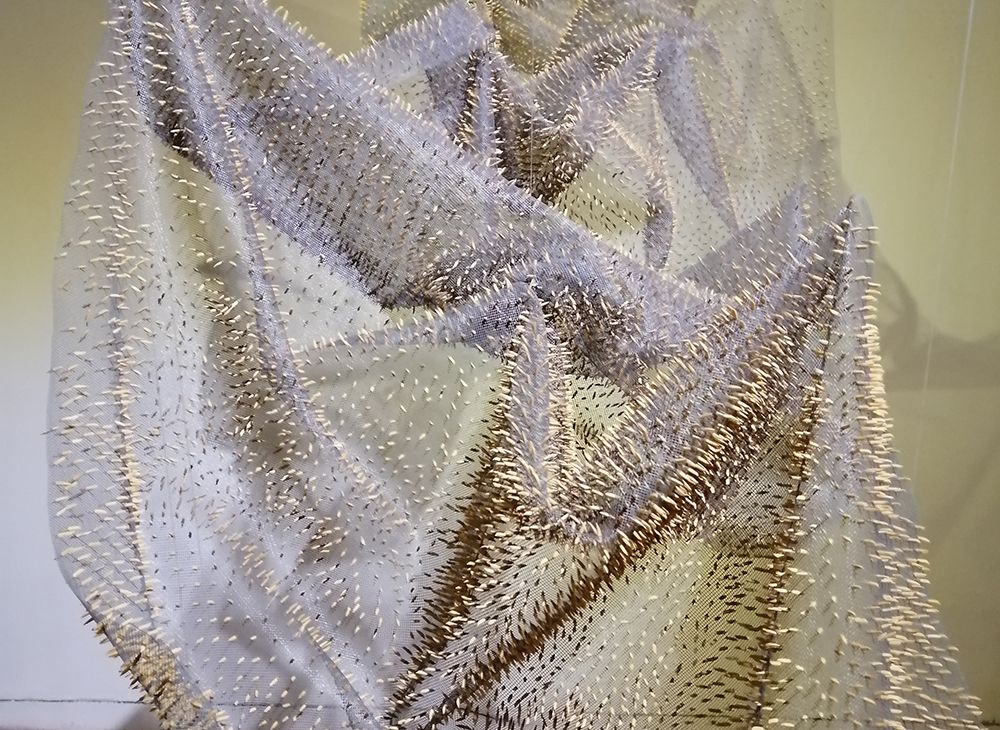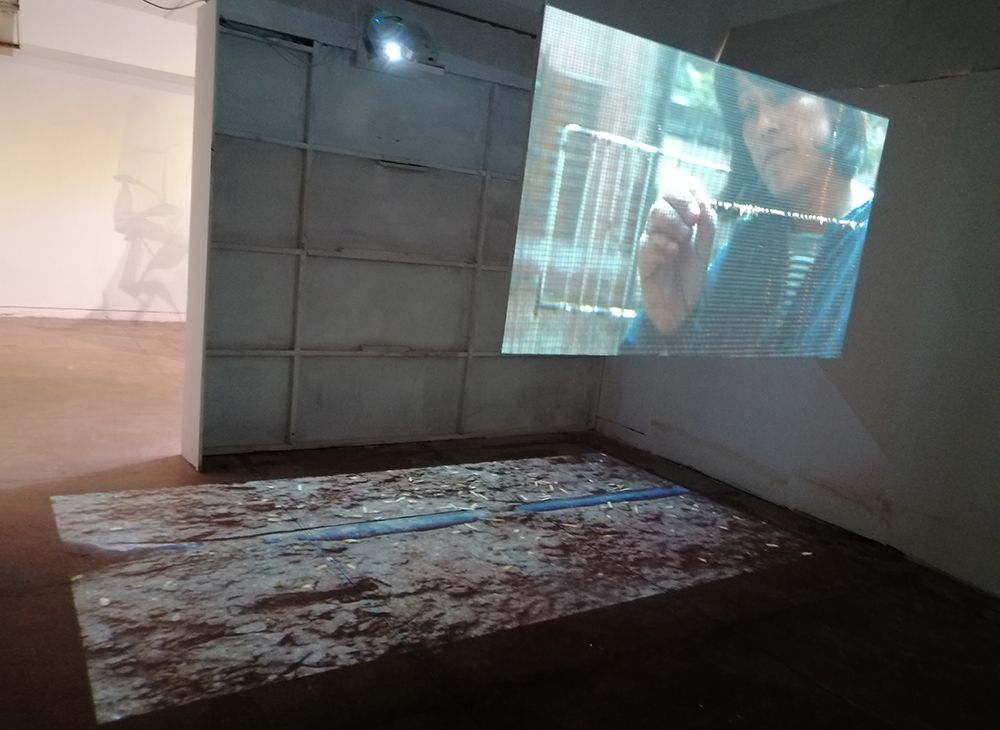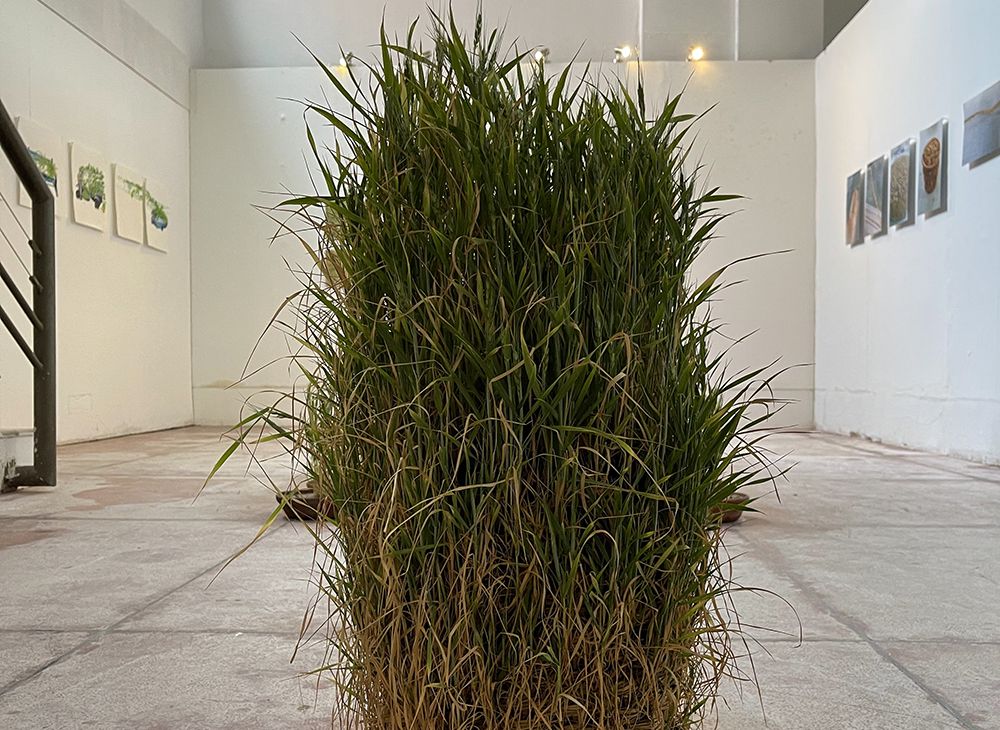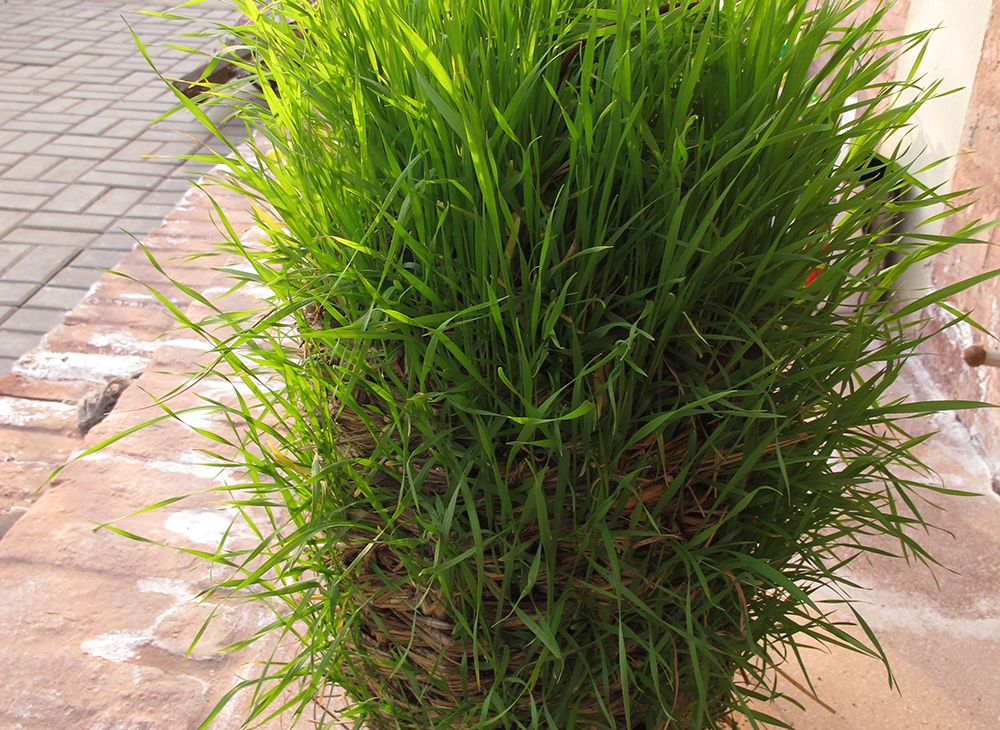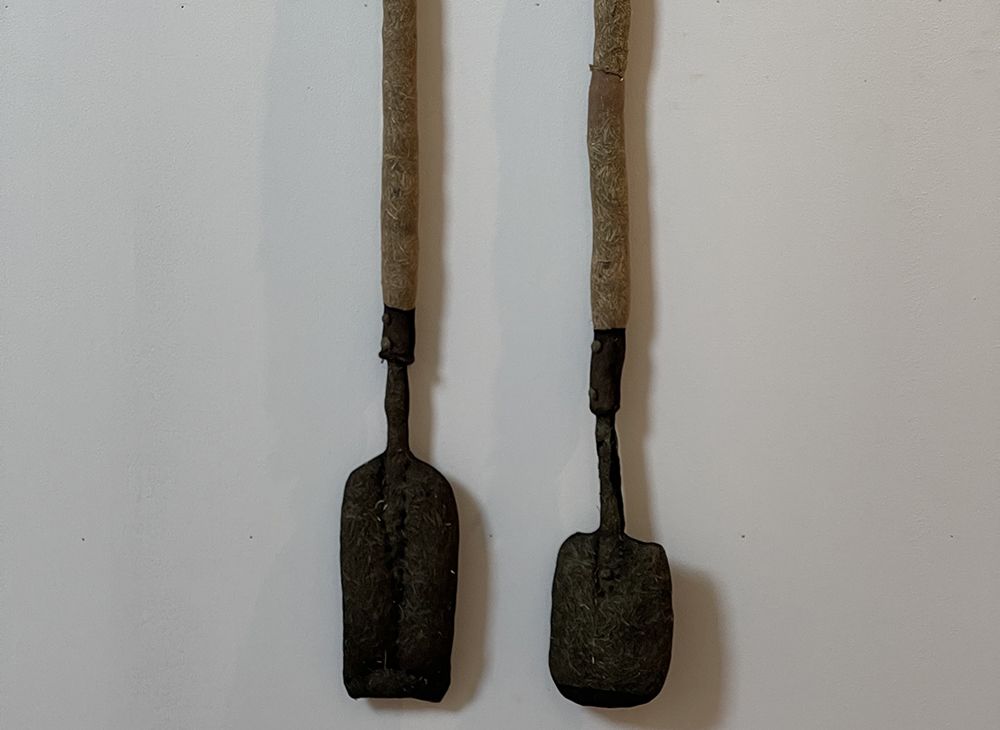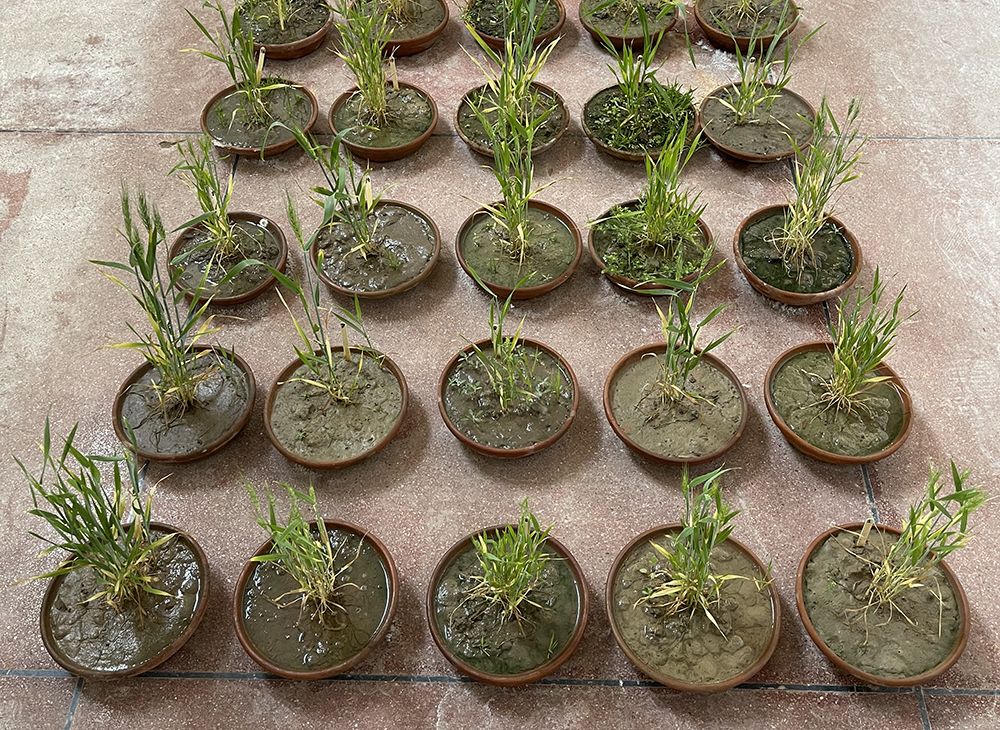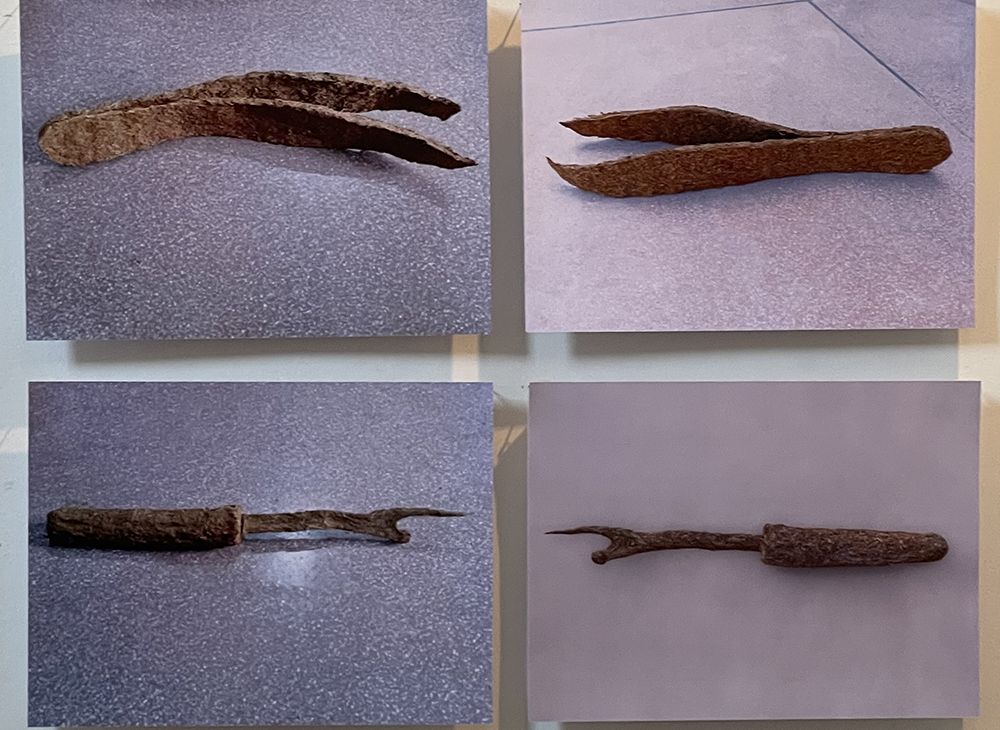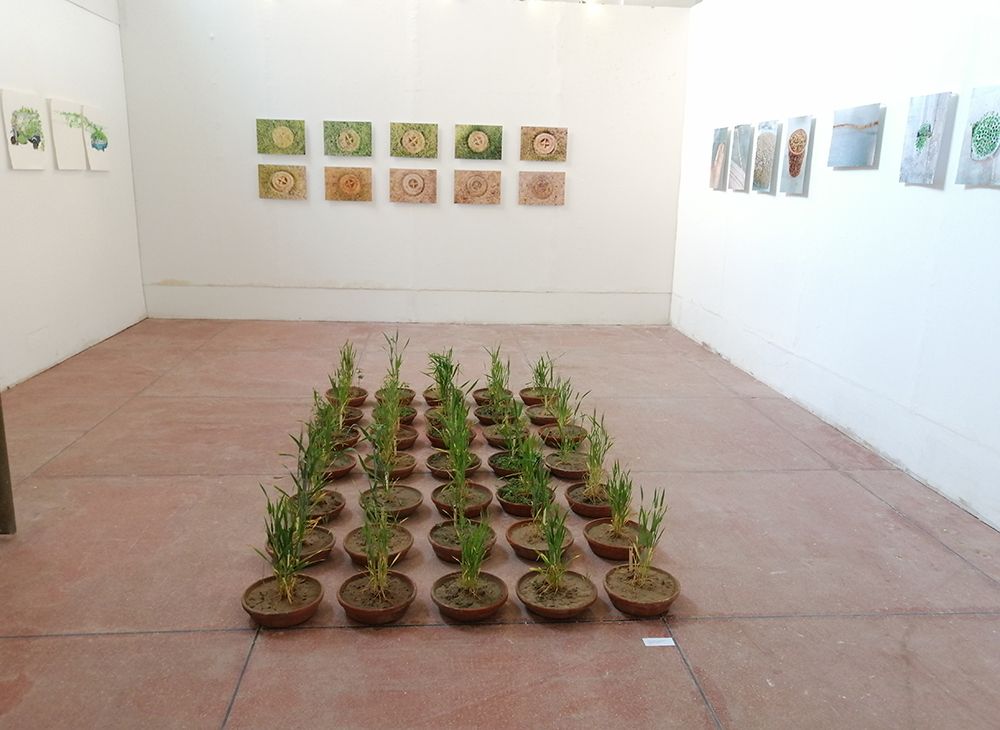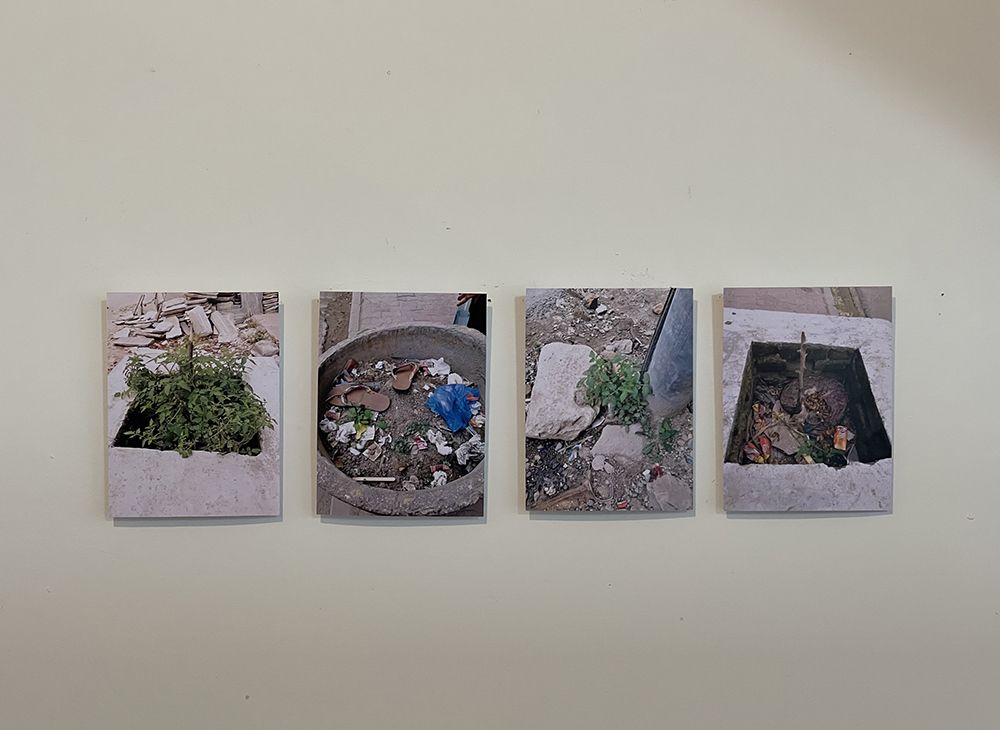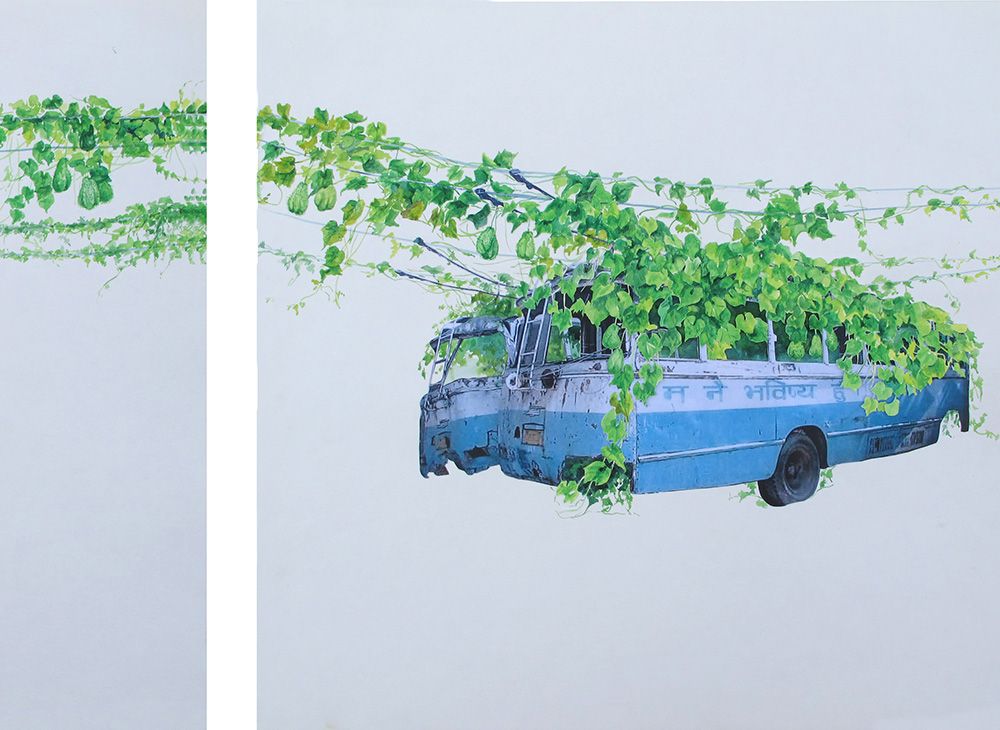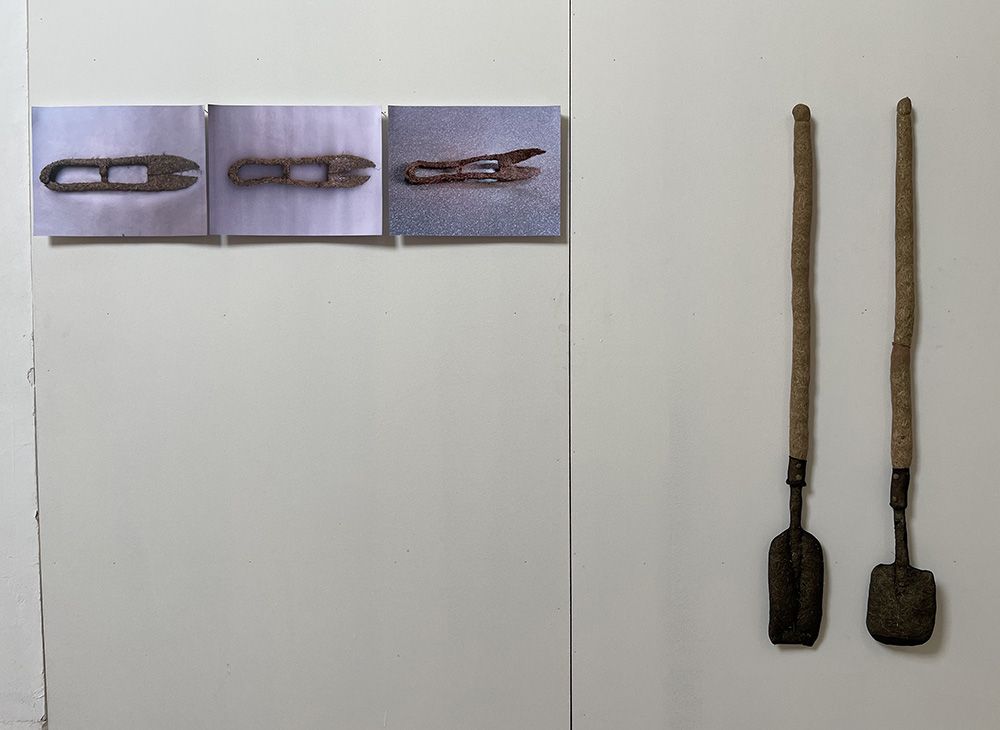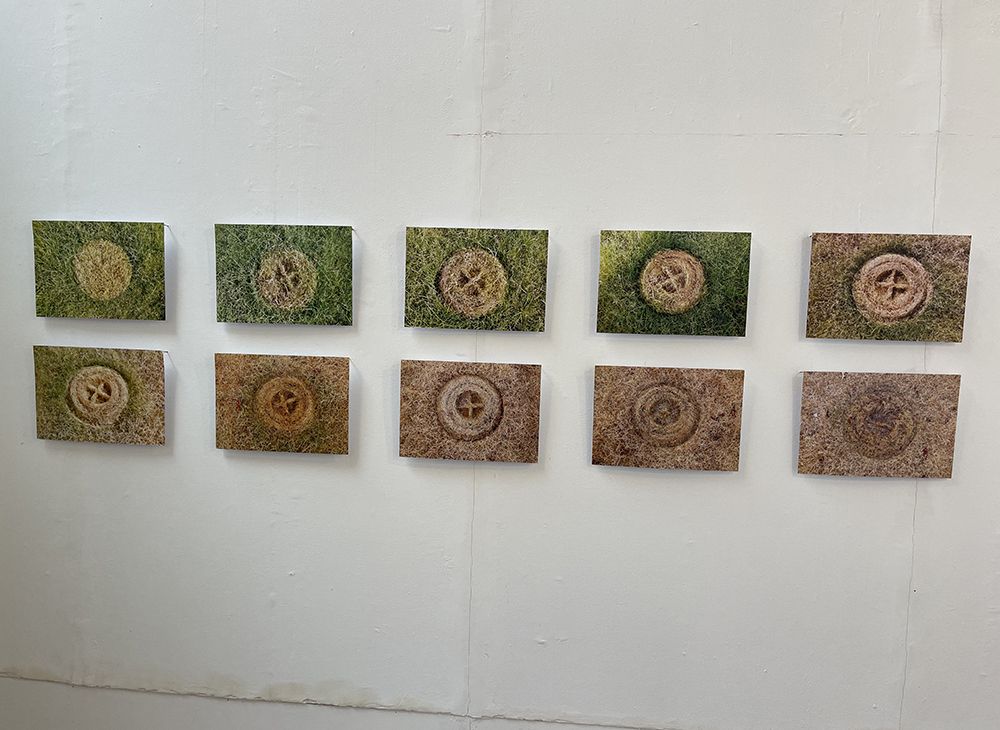One way to understand human relationship with nature is to think of their actions driven by the need to control the ecosystem, and to establish its superiority. Over the past two centuries, as humans have transitioned rapidly into a capitalist, petroleum-driven economy, the extraction of natural resources has left an unprecedented influence on the geological landscape. If we perceive this interaction between these two entities - humans and the natural world - as “a conversation”, how does nature attempt to establish its own voice?
In my art practice, I observe how the natural world responds to different variations of human interventions. Food, seeds, and soil are juxtaposed with iron rods and wire mesh to represent the time and surface in and on which we live. While nature engages in its own pace of growth what effects does it have on these industrial materials, the contemporary urban space, and the production of food?
While repetitively placing each rice seed in the bound and limited squares of the mesh and sowing the seeds in the air without land, I attempt to discipline the mind, control the output and defy even the natural laws of gravity. However, the moment my effort to structure and control the outcome stops, nature reclaims the process and takes over.
I have realized that I am the individual who adapts and intervenes in nature to understand my surroundings, invent new technologies, and transform the landscape according to my needs and desires. My hope is that this desire to experiment comes paired with an ability to recognize the consequences of my actions.



